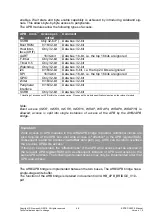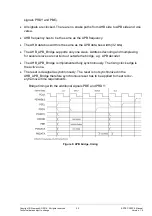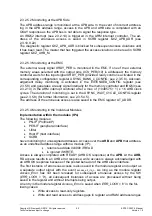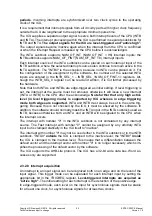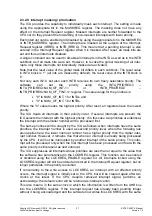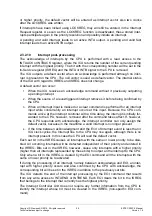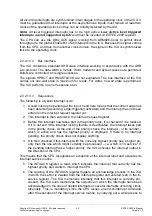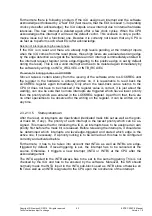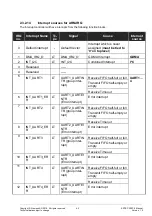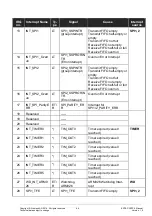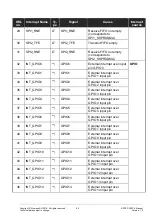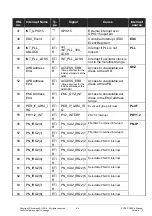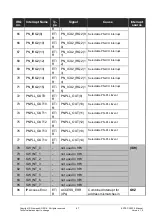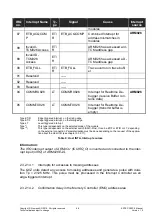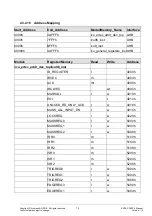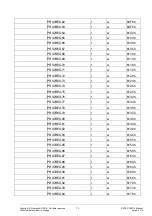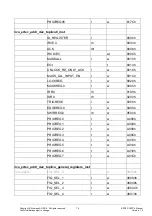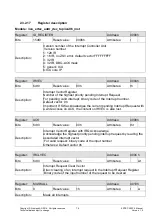
Copyright © Siemens AG 2016. All rights reserved
61
ERTEC 200P-2 Manual
Technical data subject to change
Version 1.0
the EOI register. The ICU recognizes this and deletes the corresponding bit from
the in-service register and also simultaneously cancels the above-mentioned flag.
2.3.2.13.4 Operating rules
Reconfiguration of priorities
Although the ICU can handle the same priorities for several interrupts, the following has
to be taken into account for the reconfiguration: The reconfiguration of priorities is only
permissible when there are no interrupts "in service" anymore. To ensure that no unfore-
seen event occurs during that time, the software has to mask both interrupts having the
same priority.
Level-sensitive interrupts
It has to be taken into account that a level-sensitive interrupt is acknowledged at its
source (i.e. the level reset there) before it is acknowledged on the software side. This is
necessary because otherwise another entry would be made in the interrupt request regis-
ter for this interrupt.
Acknowledgement of the INTBs with write access to acknowledge register
The software also has the option of carrying out the acknowledgement of the INTB inter-
rupt via a write access to the INTBACK register. For that it has to be noted that this write
access is destructive and the number of the fast interrupt which triggered the interrupt on
the CPU is lost irrevocably. Therefore, in this operating mode, the CPU has to know ex-
actly who triggered the fast interrupt.
Using INTAs as INTBs
INTA and INTB always have to be set to the same triggering. This is not checked by the
ICU and has to be ensured by the software. Moreover, the SW should normally mask the
INTA input in the INTA sub-block used as INTB since otherwise an INTA as well as an
INTB is signaled to the CPU upon the occurrence of the interrupt.
Identical priorities
Identical priorities are intercepted by the ICU as follows: If interrupts have the same priori-
ty, the interrupt number is used as the second priority level, whereby the following ap-
plies: The lower interrupt number has a higher priority than the higher interrupt number.
The following nevertheless applies additionally: If an interrupt is already processed by the
CPU, it cannot be interrupted by another interrupt of the same priority. Only when the first
one has been executed and the next pending interrupt is still the one of the same priority,
is this interrupt processed.
Hardware latencies in certain back2back software accesses
Due to hardware latencies, an old and wrong data item might be read back in the follow-
ing back2back accesses (described is a writing on the first and immediate reading of the
second register):
IRCLVEC -> ACK
IRCLVEC -> IRREG1-5
IRCLVEC -> SWIRREG1-5
LOCKREG -> ACK
MASK -> ACK
ACK->IRREG1-5


